 Rid of My Disgrace – Hope and Healing of Victims of Sexual Assault
Rid of My Disgrace – Hope and Healing of Victims of Sexual Assault
As a Christian psychotherapist, I found Rid of My Disgrace to be a very well-researched, thorough analysis of the issue of sexual assault from both a clinical and biblical perspective. This is likely a reflection of the co-authors, John Holcomb, a pastor and professor, and his wife Lindsey Holcomb, who has counseled victims of sexual assault and trained leaders to care for them.
They quickly establish a tone that is compassionate, supportive, encouraging and Christ-centered to victims of sexual assault. I appreciated their emphasis on how “God restores, heals, and re-creates through grace” (p. 15) in contrast to secular notions of healing based on self-help, self-healing and self-love.
The book is divided in to three parts. In Part One, titled “Disgrace,” the pair provides a thorough, detailed definition of sexual assault that emphasizes the traumatic nature of such an experience for both female and male victims. They offer facts and statistics that put the epidemic of sexual assault into a sobering, somber perspective. The authors detail potential biological, psychological, social and spiritual injuries that can result from sexual assault. Again, I appreciated that they draw the reader back to God’s ability to heal when they write,
What grace offers to the victim experiencing disgrace is the gift of refuting distortions and faulty thinking and replacing their condemning, counterfactual beliefs with more accurate ones that reflect the truths about God, yourself, and God’s grace-filled response to your disgrace” (p. 45).
In Part Two, titled “Grace Applied,” the pair offer vignettes written by both female and male victims of sexual assault. These testimonies convey emotions and experiences that grab the reader’s attention and empathy. They then write about denial, distorted self-image, shame, guilt, anger, and despair. These are approached from a perspective that seamlessly combines sound clinical information with scriptural references. They do note how forgiveness is different than reconciliation, although I wish they would have expanded upon this even more, as often the two are considered one, which can be a significant hindrance to forgiving. The pair consistently point the reader back to Christ and Scripture as the source for all comfort and healing.
In Part Three, titled “Grace Accomplished,” the authors talk about how sexual assault is the result of sin—against the victim and against God. “In addition to being a sin against others, sexual assault is also a sin against God because the blessing of sexuality is used to destroy instead of build intimacy” (p. 170). They note how sexual assault can change how victims relate to other people, and also how they relate to God. They go on to detail grace in the Old Testament, emphasizing that, “Not only does God hear, God also sees. And out of hearing and seeing, God knows the suffering of people” (p. 180). The authors end with a chapter about grace in the New Testament that focuses on the redeeming work of Christ on the cross. “The work of Christ is to deliver us from suffering, corruption, and death, as well as from sin” (p. 207).
Overall, I found the book to be very informative and thorough. Its strengths seem to be in the details about what sexual assault is and how it can impact victims, along with the need for Christ for complete healing. Pastors and loved ones of victims may find this especially beneficial.
The book may leave some victims wanting more detailed strategies about how to heal, as it is not a workbook with exercises that might help one to apply the knowledge contained in it.
Buy Now
Author: Holcomb, Justin S. & Holcomb, Lindsey A.
288 pages
Reviewed by: Sheryl Cowling, LCSW, BCPCC, BCETS February 2015
 Helen Baylor is a WELS member (Atonement Congregation). She served the MPS as a school counselor for years. She is a gardener, a mother, an artist, and a graduate of the “Guide Me With Your Counsel” curriculum. She presently lives in Mequon.
Helen Baylor is a WELS member (Atonement Congregation). She served the MPS as a school counselor for years. She is a gardener, a mother, an artist, and a graduate of the “Guide Me With Your Counsel” curriculum. She presently lives in Mequon.
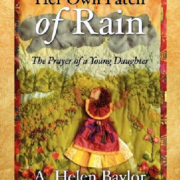
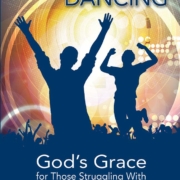
 This short read (90 pages), From Dirty To Dancing (God’s Grace for Those Struggling With Pornography) by Conquerors through Christ Chairman Mike Novotny is a helpful and honest approach to a subject that is often overlooked in Christian circles. Mike shares his own journey with purity, redirects the reader back to Christ, and shares concrete steps for those struggling as well as for friends, parents, and ministry leaders.
This short read (90 pages), From Dirty To Dancing (God’s Grace for Those Struggling With Pornography) by Conquerors through Christ Chairman Mike Novotny is a helpful and honest approach to a subject that is often overlooked in Christian circles. Mike shares his own journey with purity, redirects the reader back to Christ, and shares concrete steps for those struggling as well as for friends, parents, and ministry leaders.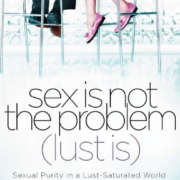
 Sex Is Not The Problem (Lust Is) may be one of the best books on the market today to help us counsel people in our struggle against the enslavement of sexual sin. It is especially useful for people who are under age 25. It is good not just because of its practical advice, but because of the stress which the author, Joshua Harris, usually gives to the Grace of God. The Gospel shines forth throughout most of this book in a way that is not found in many of the other books on the subject of sexual sin.
Sex Is Not The Problem (Lust Is) may be one of the best books on the market today to help us counsel people in our struggle against the enslavement of sexual sin. It is especially useful for people who are under age 25. It is good not just because of its practical advice, but because of the stress which the author, Joshua Harris, usually gives to the Grace of God. The Gospel shines forth throughout most of this book in a way that is not found in many of the other books on the subject of sexual sin.
 Victims may approach a relationship with God with distrust and a lot of questions. Philip Yancey is the kind of author that communicates well to such an audience. This book on prayer is not the standard instructional manual nor the straightforward encouragement to pray. As Yancey does in his other books, he takes the questions and objections of others seriously, and admits to his own doubts and struggles. For that reason, this book may be more “in tune” with the Christian who wonders how God didn’t seem to answer a cry for help or healing. Some other books on prayer are written with solid faith that never questions and ponders before arriving at the biblical truth. Hurting people may find that reading Yancey will remove some painful barriers to prayer.
Victims may approach a relationship with God with distrust and a lot of questions. Philip Yancey is the kind of author that communicates well to such an audience. This book on prayer is not the standard instructional manual nor the straightforward encouragement to pray. As Yancey does in his other books, he takes the questions and objections of others seriously, and admits to his own doubts and struggles. For that reason, this book may be more “in tune” with the Christian who wonders how God didn’t seem to answer a cry for help or healing. Some other books on prayer are written with solid faith that never questions and ponders before arriving at the biblical truth. Hurting people may find that reading Yancey will remove some painful barriers to prayer.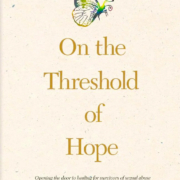
 This book is written by one of the leaders in the Christian community when it comes to understanding and counseling childhood sexual abuse (CSA). While Langberg speaks to survivors in this volume, it is also helpful reading for called workers, friends, relatives—anyone who is serving as a support system for those who have been affected by the sin of CSA.
This book is written by one of the leaders in the Christian community when it comes to understanding and counseling childhood sexual abuse (CSA). While Langberg speaks to survivors in this volume, it is also helpful reading for called workers, friends, relatives—anyone who is serving as a support system for those who have been affected by the sin of CSA.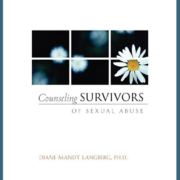
 Dr. Langberg is one of the leading figures in the Christian community when it comes to counseling childhood sexual abuse. At the time when she wrote this book she had about twenty-give years of experience in counseling those who have been sexually abused as children. She not only understands the process of helping victims become survivors, but she addresses it from a Christian perspective. What is more, she is able to connect with the counselor and offer valuable and practical insights about what to do and not do to help victims. Even though much new information has been discovered and added to the field of trauma counseling in the past several decades, this book still has much to offer.
Dr. Langberg is one of the leading figures in the Christian community when it comes to counseling childhood sexual abuse. At the time when she wrote this book she had about twenty-give years of experience in counseling those who have been sexually abused as children. She not only understands the process of helping victims become survivors, but she addresses it from a Christian perspective. What is more, she is able to connect with the counselor and offer valuable and practical insights about what to do and not do to help victims. Even though much new information has been discovered and added to the field of trauma counseling in the past several decades, this book still has much to offer.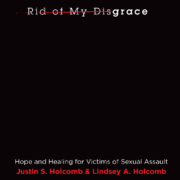

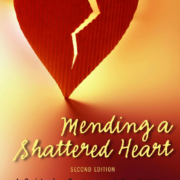
 A Guide for Partners of Sex Addicts
A Guide for Partners of Sex Addicts
 In this self-published little book, Porn and You, author John Wong goes into a helpful discussion of pornography. He divides his discussion into two parts. The first part deals with what porn is and its harmful effect on you, your relationships to your children, spouse, and, just as importantly, your attitude towards women in general. Part Two takes one through the evaluation of whether you have an addiction to porn. Then Mr. Wong goes into a discussion of how to break free from this addiction. Lastly he concludes with a brief listing of on-line resources that one might find useful.
In this self-published little book, Porn and You, author John Wong goes into a helpful discussion of pornography. He divides his discussion into two parts. The first part deals with what porn is and its harmful effect on you, your relationships to your children, spouse, and, just as importantly, your attitude towards women in general. Part Two takes one through the evaluation of whether you have an addiction to porn. Then Mr. Wong goes into a discussion of how to break free from this addiction. Lastly he concludes with a brief listing of on-line resources that one might find useful.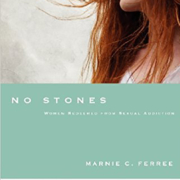
 This book is a serious, thorough resource for women struggling with sexual addiction. It gives a realistic view of the problems of women’s addiction, noting the ways it differs from men’s. In the book, No Stones: Women Redeemed from Sexual Addiction, Marnie Ferree doesn’t offer quick fixes but she does guide the reader toward hope and recovery.
This book is a serious, thorough resource for women struggling with sexual addiction. It gives a realistic view of the problems of women’s addiction, noting the ways it differs from men’s. In the book, No Stones: Women Redeemed from Sexual Addiction, Marnie Ferree doesn’t offer quick fixes but she does guide the reader toward hope and recovery.